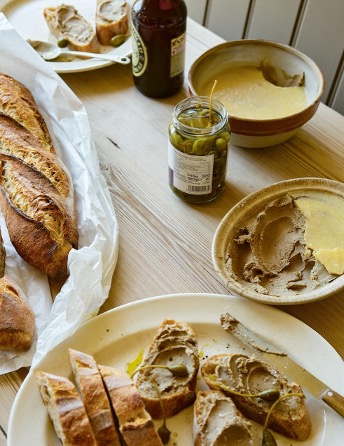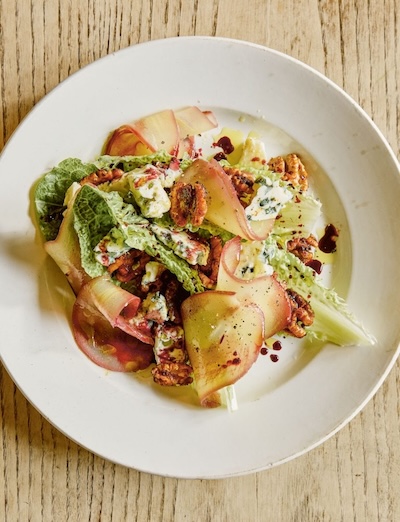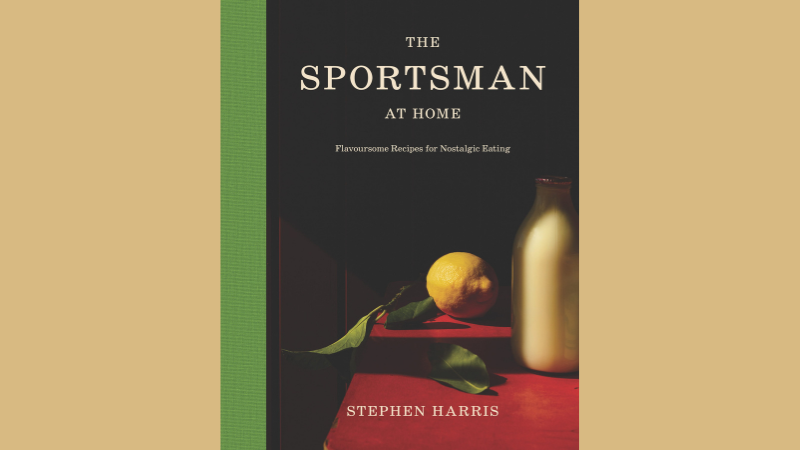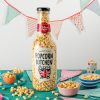The Sportsman at Home – In 1999 chef Stephen Harris took over a rundown pub on the Kent coast and turned something ordinary into something extraordinary with his pared-back style of cooking, earning (and retaining) a Michelin star for The Sportsman, as well as being named the UK’s best restaurant multiple times. It’s a cult classic both adored by professionals from all over the world, and a truly beloved, unpretentious local.
I was lucky enough to go there with my husband to celebrate a wedding anniversary some years ago. And the memory of it has remained fixed in my memory (and that’s in spite of visiting umpteen three-star Michelin restaurants across Europe with the late Michel Roux when I ran the Roux Scholarship). I was therefore delighted to be given the opportunity to review Stephen’s latest book. In The Sportsman at Home, Harris, a self-taught chef, welcomes us into his kitchen in Whitstable to discover his favourite ingredients and show us how to apply the simple ethos of his iconic restaurant to home cooking. With chapters covering ‘Dinner’, ‘Nostalgia’, ‘Christmas’ and ‘An Ode to Cream’, Stephen captures the imagination for simple cooking with his love of seasonal, local produce. Including dishes such as Pork Chop with Charred Leeks, Coq au Vin, Cream of Soups and Blackcurrant and Almond Tart, Stephen reintroduces familiar favourites, made simpler, and much better.
There’s stunning location photography of the Kent landscape that serves as Stephen’s inspiration, The Sportsman at Home is a true celebration of simple food at its very best, from one of the most respected chefs in the UK. Published by Quadrille, at £30 for a very beautiful hardback, this will make a lovely gift, but no doubt you’ll want to keep it for yourself! Here are a couple of recipes to tempt you to order a copy.
Duck Liver Pâté Serves 12

“This pâté was born from a series of thoughts I had about foie gras. Although I love the taste of it, I just can’t justify the process of force-feeding ducks and geese. I thought that one of the reasons it tastes so good is the high fat content, so I decided to replace the fat with butter and reduced booze. When you combine the hot, reduced booze, just-cooked duck livers and cold, diced butter in a food processor, an emulsion forms as the butter melts into the other ingredients. When it has cooled, you are left with a perfect smooth pâté.”
300 ml (10 fl oz/11/4 cups) brandy
300 ml (10 fl oz/11/4 cups) Sauternes
300 ml (10 fl oz/11/4 cups) white port
450 g (1 lb) duck livers, cleaned and trimmed
250 g (9 oz) really good unsalted butter made from cultured cream, cold and diced, plus extra for frying
salt and freshly ground black pepper
Pour the brandy, Sauternes and white port into a saucepan and boil to reduce to about 100 ml (31/2 fl oz/scant 1/2 cup), which will take around 10 minutes. Keep warm.
Heat a little butter in a frying pan over a medium heat until foaming, then briefly cook the livers until browned but still pink in the middle. Season well.
Transfer the livers to a food processor with the hot reduced booze and start to blend. Add the cold, diced butter and an emulsion should start to form. Blend until smooth.
Check the seasoning, as this is important. A pâté will usually contain 1–2 per cent salt, which in this case means 7–14 g (1/4–1/2 oz). Add as much as you like in this range, depending on your taste.
Pour the pâté into a bowl. It can be eaten warm with bread or chilled to serve later.
Pear, Walnut and Roquefort Salad Serves 4

“This is an early dish from The Sportsman that old customers and staff still talk about now. It was based on a salad from Cafe Pasqual’s Cookbook (a restaurant in Santa Fe), which I got from my brief time cooking in Mexican restaurant in Canterbury. They used pecan nuts, which I changed to walnuts, and the blue cheese became Roquefort.”
50 ml (25 fl oz/3 cups) red wine
2 tablespoons caster (superfine) sugar
1 cinnamon stick
1 star anise
3 cloves
pinch of chilli (hot pepper) flakes
4 Conference or Bosc pears, peeled
1 tablespoon neutral oil
2 teaspoons coffee liqueur (Tia Maria or Kahlúa)
2 teaspoons smoked paprika
1 teaspoon icing (powdered) sugar
small handful of walnut halves
1 romaine lettuce
200 g (7 oz) Roquefort
salt and freshly ground black pepper
First, poach the pears. Put the wine, sugar, cinnamon stick, star anise, cloves and chilli flakes into a saucepan and add the pears. Ensure the pears are totally submerged in the wine by placing a circle of baking parchment on top and then weighing them down with a plate. Poach gently over a low heat for about 30 minutes, or until the pears are soft – check them with a sharp knife.
Once cooked, remove the pan from the heat and allow the pears to cool in the poaching liquid, then strain the poaching liquid into a clean saucepan. Boil the poaching liquid to reduce it until it is the consistency of a syrup. This will make about 200 ml (7 fl oz/scant 1 cup) syrup.
Next, make the walnuts. Preheat the oven to 180°C fan (400°F). Put the oil, coffee liqueur, paprika and icing sugar into a bowl and mix together. Add the walnuts and toss to coat, then spread the nuts onto a baking sheet and toast in the oven for 30 minutes. Check and stir them regularly so they don’t burn. Remove from the oven and leave to cool.
Slice the cooled pears lengthways on a mandoline. Put the large lettuce leaves on each plate, then toss the leaves with a mixture of the pears, walnuts and Roquefort. Drizzle the poaching syrup around the salad, then sprinkle the salad with a pinch of salt and a twist of black pepper.
Whisky and Coffee Trifle Serves 6


“This trifle is another recipe from the Dairy Cookbook that the milkman delivered to us back in the 1970s (see page 12). I really prefer the whisky/coffee axis of flavour over the usual sherry/fruit one of a typical trifle. When asked for a definition of trifle, my brother Phil said he thinks it’s in the squelchy noise that’s made when you serve it rather than any particular ingredients.”
1 standard-sized shop-bought Madeira cake
1 tablespoon instant coffee dissolved in 4 tablespoons hot water (or 4 strong shots of espresso if you have the facilities)
4 tablespoons whisky
6 large egg yolks
60 g (2 oz/generous 1/4 cup) caster (superfine) sugar
825 ml (28 fl oz/31/3 cups) double (heavy) cream
freshly grated nutmeg, to taste
50 g (13/4 oz) dark (bittersweet) chocolate with 70% cocoa solids
50 g (13/4 oz/scant 1/2 cup) walnuts, chopped
Break the Madeira cake into pieces and place it in the bottom of a trifle bowl. Drizzle over 3 tablespoons each of the coffee and whisky and leave to absorb.
Meanwhile, make the custard. Combine the eggs and sugar in a heatproof bowl set over a pan of simmering water and whisk to combine.
Heat 425 ml (141/2 fl oz/13/4 cups) of the cream in a saucepan until just below boiling point.
When the eggs and sugar are well combined, pour over the hot cream and whisk together, then return the mixture to the saucepan and heat gently to around 80°C (175°F), stirring often to avoid the egg proteins clumping together. Add some nutmeg to taste, then cool the custard quickly in a bowl set over ice. Add the remaining tablespoons of whisky and coffee. Leave to cool completely in the refrigerator until ready to use.
Once cooled, pour the custard over the soaked cake and then chill in the refrigerator for 1 hour. Whisk the remaining cream until it holds soft peaks and spread it over the top of the chilled trifle.
Melt the chocolate in the microwave and pour onto a plate to set hard. Using a teaspoon, make curls of chocolate and use these to decorate the trifle along with the crumbled walnuts.
Note: This recipe makes a thick custard, which is ideal for trifle. If you prefer the custard to set firm, then add 1 tablespoon cornflour (cornstarch) to 2 tablespoons milk and mix to a paste, then add this to the custard when it is returned to the saucepan.
Extracted from The Sportsman at Home by Stephen Harris (Quadrille, £30) Photography by Kim Lightbody
The Seasoned Gastronome


